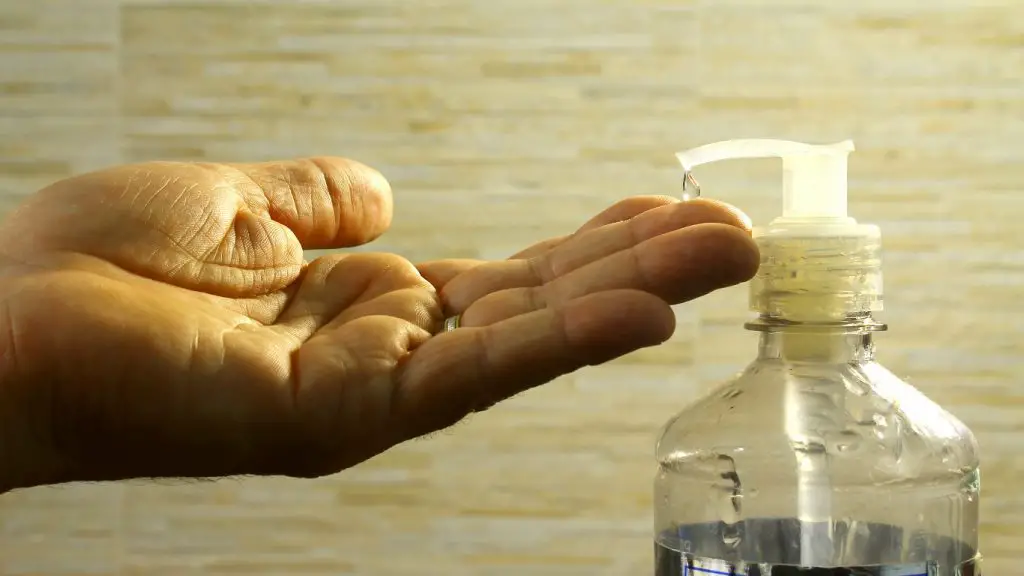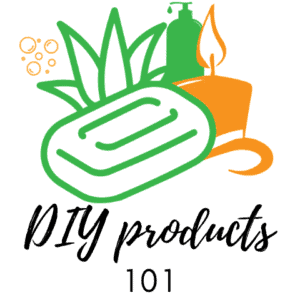If you’re not sure about how to get started or are having trouble getting anything up in terms of foam when making your own homemade liquid soaps, don’t worry! The lack of lather in liquid soap has always been a commonly known problem. But with just the right ingredients and some knowledge for what types work well together for producing lots of bubbles (the best kind), you could even start a business!
Why is my liquid soap not foaming? Using the wrong type of oil in your soap will make your liquid soap foam much less. Super fatting your liquid soap too much or using too much butter in your recipe can also be the cause for less foaming.
Whether you’re seeking a fun hobby, saving money, or pursuing a new business venture, our step-by-step guide makes crafting spa products enjoyable and easy, perfect for hobbies, saving money, or starting a business. Explore 126+ recipes, from soaps to lotions, with our beginner-friendly Quick Start Guide. Ditch store-bought products with unknown chemicals and embrace personalized, high-quality creations that cater to allergies and sensitivities using The Handcrafter’s Companion.
Carefully controlled formulations are necessary to produce liquid soap batches with better foaming capacity. Handmade soaps can produce a lot of lather if made in the right way. Here is how to make a tremendous foaming liquid homemade soap.
Why is my liquid soap not foaming?

The type and amount of fats used will determine the leather characteristics produced by soap. Different oils have different foaming abilities, so it is important to use a lube that compliments your selection to work properly for the liquid soap recipe.
If you don’t want harsh chemicals on your sensitive skin, then gel cleansers are the way to go! Gel soap is generally more gentle than other types of soaps. It won’t leave behind a residue or strip any natural oils from your face as traditional bar soaps do.
Liquid soap is not designed to foam like a traditional soap
I think it’s crucial to know that liquid soap is not designed to foam like a traditional soap. When using liquid soaps, it’s important to remember that they are more concentrated and typically have less water. With this in mind, the key ingredient for creating bubbles is air. Several things can be done to increase bubbles when using liquid soap, which we will discuss further in the article.
What Causes Liquid Soap To Foam?
Before we dive in, we first need to understand what oils make liquid soap foam? So, what oils are best for making liquid soaps? This is a question with many different answers. Coconut oil is one of the more practical options on the market today and can provide some really high-quality lather!
The input states that there are enough fatty acids in natural soap (soap made from animal fat) to make stable foam. However, when natural alkaline soap becomes higher than pH 8, it breaks faster because it starts dissolving proteins in the skin’s acid mantle, which causes increased irritability or dryness.
Furthermore, this also shows how coconut oil performs well as a base ingredient for liquid soaps; its ability not only creates a great lather.
But what about other oils?
Base Oils:
The butter and oils used in soap making can be a deciding factor when it comes to the leathering capacity of your soap.
Coconut Oil:
Coconut oil, as one of the best options out there, is a natural soap ingredient that creates luxurious leather with giant bubbles. Too much coconut can cause tight and itchy skin, so be sure to use just the right amount!
Castor Oil:
Soaps sometimes build up on skin and hair, causing it to be too dry. That’s why castor oil is a vital ingredient in liquid soaps, as its creamy texture helps keep bubbles soft without bursting prematurely.
Sunflower Oil:
This oil helps to make the leather more durable, so it does not disappear as quickly.
Palm Oil:
Palm oil is relatively cheaper and can be used in commercially produced soaps, but it also has the foaming capacity to be included in homemade liquid soap if wanted.
Things Reducing Soap Leather:
When you are making soap at home, and it does not turn out leathering or bubbling, certain ingredients in your handmade soap are most likely causing this problem.
Single Oil or Single Fat Soaps:
These soaps use only one kind of oil for their foaming capacity, which means that they can’t produce the same lather as those containing more than one type of fat.
High Super-fat:
Super-fat in soap making is a common practice to ensure the moisture of your skin stays intact. If you have less than 5% super-fat, it’s possible that no matter how much lye there was used for saponification, the oils may not be fully converted into soap and produce leather instead.
Soap makers usually leave at least 5% super fat so that their product retains its moisturizing properties; dumping more than this can potentially lessen what could’ve been produced as an excellent piece of soap that may have lathered perfectly!
Too Much Butter:
When making soap, it is essential to consider the fat content. If you plan on using butter such as shea and cocoa for your recipe, make sure that you are not using too much cause your soap is not lathering. Saturated fats do not need leather well when used in soap solutions.
Hard Water:
If the water you are washing with has calcium, magnesium, and iron in it, your soap won’t lather well. Using a water softener is an economical way of avoiding soap scum. Soaps can be made to work better by adding synthetic surfactants or chelating agents – these ingredients help prevent mineral ions from binding onto them before they have time to form suds and bubbles on themselves.
Can Any Handmade Liquid Soap Be Foaming?
Handmade soaps often do not foam as much as commercial soaps because they are made without synthetic compounds that would make them more bubbly. These ingredients, such as chemicals and surfactants, can be found in most store-bought soap formulas, but many people prefer to have fewer of these additives when washing their hands or body.
The handmade process is typically slightly different than its mass-produced counterpart since natural oils like coconut oil might replace some petroleum products (like glycerin), which could affect how well your soap foams! However, by making changes in your recipe, you can maximize the lathering capacity and have an environmentally friendly option available too.
Adding oils that make the foam and adding a little bit of sugar helps make an excellent foaming handmade liquid soap.
How Do You Increase Foam In Liquid Soap?
Apart from using the most foaming oils, you can increase foam in a liquid soap by adding fatty acid salts to it. The natural and chemical substances that make the soap foamier are called foam stabilizers or foam boosters.
Additives containing high sugars improve the soap’s foaming ability. Here are a few natural and artificial leathering agents:
Adding Aloe Vera to the Recipe:
In addition to its skin soothing and nourishing properties, aloe vera increases the foaming properties of soap.
Adding sugar to the soap recipe makes the soap form light, bubbly lather if the oils do not produce the desired results. Sugar can be added to the soap recipe in three stages.
Adding Sugar before the Lye:
In this method, you can dissolve water before adding the lye. If there is salt in the recipe, add it too in this stage. ½ to 1 teaspoon is sufficient for 16 ounces of oil.
Adding Sugar to the Lye Solution:
In this method, sugar is added directly to the lye solution. You can use ½ – 1 teaspoon sugar per pound of oils. Stir the solution until sugar dissolves completely. Be careful to dissolve the sugar before adding fragrance oils.
Adding Sugar Syrup at Trace:
In this method, a sugary solution is prepared separately. This syrup is prepared by adding 2 cups of sugar to 1 cup of water and stirring it regularly on a low flame. Save in a separate bottle and use one teaspoon of this syrup to a soap containing 1 pound of oils.
Adding A Sugary Liquid:
Milk, honey, juice, and clay increase the leather, but they make the soaps susceptible to bacterial growth.
Adding Sodium Lauryl Sulfate:
Sodium Lauryl Sulfate is a cleaning agent that produces a lot of foam. This foam does not clean itself. Instead, it makes the user feel good about the product’s effectiveness. Sodium Lauryl Sulfate can cause an allergic reaction to the skin, eyes, and lungs. Sodium Lauryl Sulfate is the most common commercial additive used in liquid soaps, shampoos, and body wash.
Foam Stabilizers:
There are two main classes of foam stabilizers:
The first class includes various polymers. They are carbohydrates such as modified starches and cellulose. The second is small molecule surfactants, which do not have extensive detergency or foaming capacity of their own. Still, when they are added to solutions, they stabilize the foam produced by other surfactants.
Amine oxides like DDAO, dodecyl dimethyl amine oxide, and lauramidopropyl amine oxide are commonly used for increasing the foaming ability of soap. Alkanolamides like lauramide, lauric diethanolamide, and DEA; and betaines like Cocamidopropyl, Cocamidopropyl dimethyl glycine betaine. Betines are versatile foaming ingredients that can produce foam and stabilize surfactants foam.
Conclusion:
It is difficult but not impossible to produce a natural soap with thick, bubbly foam. A careful selection of oils and using sugar in the solution can create excellent results. However, if you require your foam to lather like commercial soaps on store shelves, chemical additives such as foaming stabilizers or boosters will do the trick!
